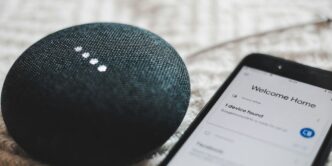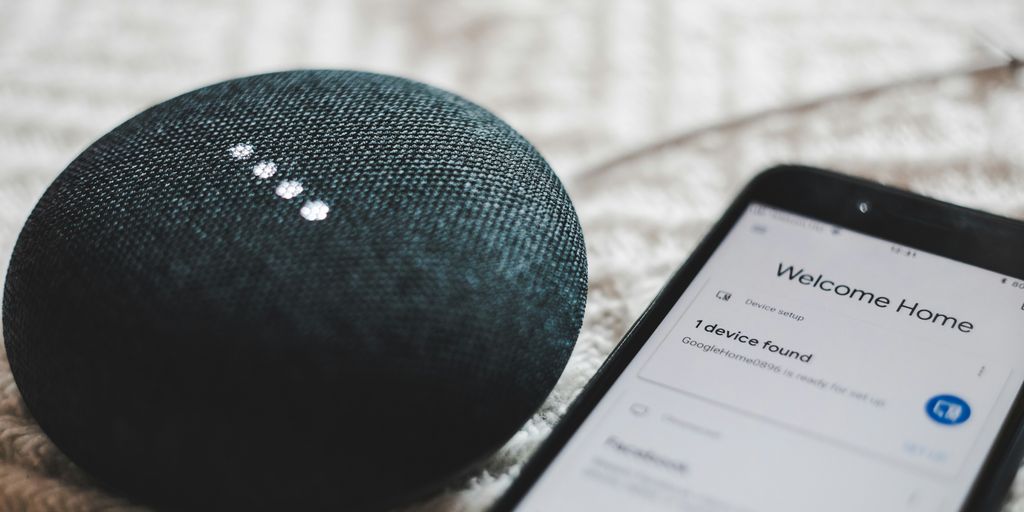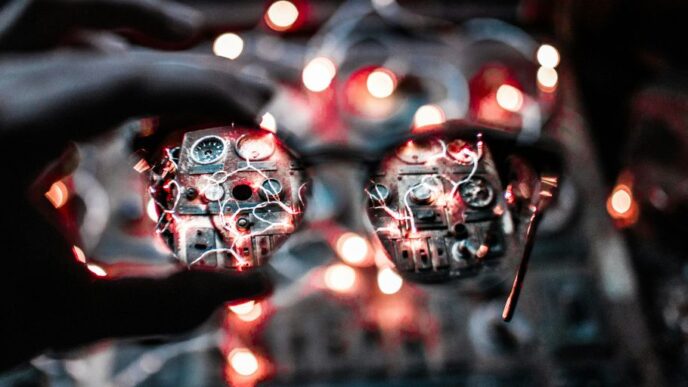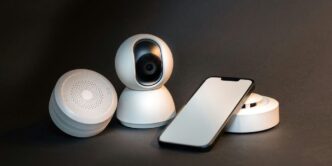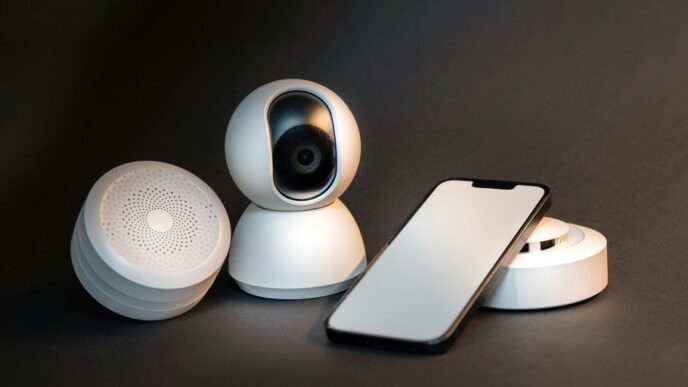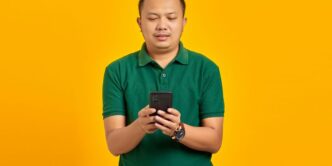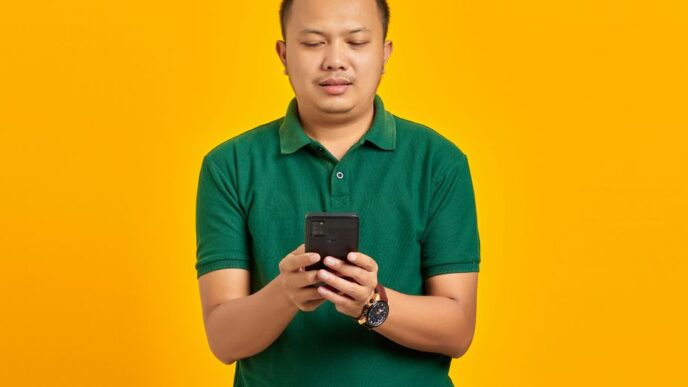Ever wonder how so many everyday things just seem to ‘know’ what to do or talk to each other? It’s all thanks to something called the Internet of Things, or IoT. Basically, it’s about connecting regular objects to the internet so they can send and receive data. This means everything from your coffee maker to your car can become ‘smart.’ We’re going to check out some cool iot devices examples that are already a big part of our daily lives.
Key Takeaways
- IoT makes homes smarter, letting you control security, temperature, and even kitchen stuff from your phone.
- Wearable tech, like fitness trackers and smartwatches, helps us keep tabs on our health and stay connected.
- Cars are getting smarter too, with built-in navigation, diagnostic tools, and even features for self-driving.
- Cities are using IoT to manage traffic better, light up streets efficiently, and monitor the environment.
- IoT is changing how we shop, helping stores track products, give personal advice, and even speed up checkout.
Smart Home Integration
Smart home tech is everywhere these days, and it’s not just about fancy gadgets. It’s about making life easier, safer, and more efficient. I remember when I first got a smart thermostat – it felt like something out of a sci-fi movie! Now, I can’t imagine going back. The ability to control various aspects of your home remotely is a game-changer.
Enhanced Home Security Systems
Home security has gotten a serious upgrade thanks to IoT. We’re talking way beyond just a basic alarm. Think smart doorbells with video, motion sensors that can tell the difference between a pet and a person, and even smart locks you can control from your phone. I like the idea of personalized access codes for family members, so you know exactly who’s coming and going. Plus, many systems now offer geofencing, so you get a reminder to arm the system if you leave home without doing it. It’s like having a virtual security guard!
Automated Climate Control
Remember the days of manually adjusting the thermostat? Now, smart thermostats learn your habits and adjust the temperature automatically. You can even control them remotely via a mobile app. Imagine coming home on a hot day and turning on the AC before you even get there! Some systems can even detect if a window is open and adjust the temperature accordingly. And if you have an older home without central air, you can still get a smart room air conditioner. It’s all about comfort and saving energy.
Connected Kitchen Appliances
The kitchen is becoming the next frontier for smart home tech. We’re not just talking about fancy refrigerators with touchscreens. Think about ovens you can preheat from your phone, coffee makers that start brewing automatically, and even dishwashers that can order more detergent when they’re running low. Some smart refrigerators even have cameras inside, so you can see what you need to buy while you’re at the store. It’s all about convenience and making meal prep a little less of a chore. I saw one internet Digital DIOS smart refrigerator once, and it was pretty impressive.
Wearable Technology Innovations

Wearable tech has exploded in popularity, and it’s easy to see why. From fitness to healthcare, these gadgets are changing how we interact with our bodies and the world around us. It’s not just about counting steps anymore; it’s about getting a much better understanding of our health and staying connected in new ways.
Fitness Trackers for Health Monitoring
Fitness trackers have come a long way. Early versions just counted steps, but now they monitor heart rate, sleep patterns, and even blood oxygen levels. These devices provide a wealth of data that can help people make informed decisions about their health. I remember when I first got a fitness tracker; I was shocked to see how little sleep I was actually getting. It motivated me to change my habits and prioritize rest. These trackers can also be useful for remote patient monitoring, alerting doctors to potential problems before they become serious.
Smartwatches for Daily Connectivity
Smartwatches are like mini-smartphones on your wrist. They do more than just tell time; they let you answer calls, read texts, and even control other smart devices. I use my smartwatch to manage my music while I’m working out, and it’s incredibly convenient. Plus, with features like GPS and mobile payments, you can leave your phone at home and still stay connected. The latest [smartwatch sector](smartwatch sector) models even track heartbeat rhythm and different types of physical activity during multi-sport workouts.
Medical Wearables for Remote Care
Medical wearables are revolutionizing healthcare. These devices can monitor vital signs, track medication adherence, and even deliver therapies remotely. For example, there are wearable glucose monitors that continuously track blood sugar levels, alerting patients and doctors to any dangerous spikes or drops. This is especially helpful for people with diabetes, who need to carefully manage their blood sugar. The possibilities are endless, and I’m excited to see how these devices will continue to improve healthcare in the future.
Connected Vehicle Systems

Connected vehicle systems are changing how we interact with our cars and the world around us. It’s not just about getting from point A to point B anymore; it’s about doing it smarter, safer, and more efficiently. From entertainment to safety features, IoT is making our drives more connected than ever before.
In-Car Infotainment and Navigation
Remember the days of paper maps and AM radio? Those are long gone! Now, we have in-car infotainment systems that do everything from playing our favorite tunes to providing real-time navigation. Apps like Waze and Google Maps use IoT traffic management to collect data from countless vehicles, giving you up-to-the-minute traffic updates and suggesting alternate routes to avoid jams. It’s pretty wild how much these systems know. I remember when I drove cross-country last year, and the navigation system rerouted me around a major accident, saving me hours. It felt like something out of a sci-fi movie!
Vehicle Diagnostics and Maintenance Alerts
One of the coolest advancements is the ability for your car to tell you when something’s wrong. No more guessing games or waiting for that check engine light to come on. Modern cars are equipped with sensors that constantly monitor various systems, from engine performance to tire pressure. This data is then transmitted to the cloud, where it’s analyzed to identify potential issues. You might get an alert on your phone saying your tire pressure is low or that your engine oil needs changing soon. This proactive approach can save you from costly repairs down the road and keep you safe on the road. My friend Sarah ignored a tire pressure warning once, and ended up with a flat tire in the middle of nowhere. Now, she pays attention to those alerts!
Autonomous Driving Capabilities
Self-driving cars still feel like they’re a bit in the future, but the technology is rapidly evolving. We’re already seeing features like adaptive cruise control, lane keeping assist, and automatic emergency braking becoming more common. These systems use a network of sensors, cameras, and radar to perceive the environment around the vehicle and make decisions accordingly. While fully autonomous vehicles aren’t quite ready for prime time, these advancements are paving the way for a future where driving is safer and more convenient. John Deere’s experimental self-driving tractor is a great example of how this technology is expanding beyond just cars. It’s only a matter of time before we see more and more autonomous features in our everyday vehicles.
Smart City Infrastructure
Smart city infrastructure is where IoT really shines, making urban living more efficient and sustainable. It’s not just about fancy gadgets; it’s about using data to make better decisions and improve the quality of life for everyone. I think it’s pretty cool how cities are starting to use technology to solve everyday problems.
Intelligent Traffic Management
Traffic is a headache for everyone, but IoT is helping to ease the pain. Traffic management systems use sensors to monitor traffic flow in real time. This data allows traffic signals to adapt dynamically, reducing congestion and improving commute times. It’s not perfect, but it’s a step in the right direction. Imagine a city where traffic lights actually respond to the cars around them – that’s the goal.
Smart Public Lighting
Smart streetlights are another great example. These lights can adjust their brightness based on the time of day, weather conditions, and even pedestrian activity. This saves energy and reduces light pollution. Plus, they can alert maintenance crews when they need repairs, ensuring that streets stay well-lit and safe. It’s a simple idea, but it can make a big difference in a city’s energy consumption and safety.
Environmental Monitoring Sensors
IoT sensors are also being used to monitor environmental conditions in cities. These sensors can track air quality, noise levels, and water quality, providing valuable data for city planners and residents. This information can be used to identify pollution hotspots, track the effectiveness of environmental policies, and inform public health initiatives. It’s all about using data to create a healthier and more sustainable urban environment. I think that’s something we can all get behind.
Revolutionizing Retail Experiences
IoT is changing how we shop, both online and in physical stores. It’s not just about faster checkouts; it’s about making the whole experience better for both the customer and the retailer. Think about how inventory control can be improved with real-time tracking, or how personalized offers can pop up on your phone as you walk down the aisle. It’s a big shift, and it’s happening fast.
Inventory Management and Tracking
Keeping track of what’s on the shelves used to be a manual, time-consuming job. Now, IoT sensors can automatically monitor stock levels, sending alerts when items are running low. This means less time spent counting boxes and more time focusing on customers. Plus, it helps prevent those frustrating out-of-stock situations. Imagine a store that always has what you need – that’s the power of IoT in inventory management. It also helps with environmental monitoring, ensuring that temperature-sensitive goods are stored correctly.
Personalized Shopping Assistance
Remember when shopping meant wandering around hoping to find what you needed? IoT is changing that. Beacons and sensors can track your location in a store and send personalized recommendations to your phone. This could be anything from a discount on your favorite brand to a suggestion for a product you might like based on your past purchases. This level of personalization makes shopping more efficient and enjoyable.
Here are some ways retailers are using personalized shopping assistance:
- Sending targeted promotions based on location within the store.
- Providing product recommendations based on purchase history.
- Offering real-time assistance via chatbots or in-store kiosks.
Automated Checkout Systems
Nobody likes waiting in line. Automated checkout systems, powered by IoT, are designed to speed up the process. Think about self-checkout kiosks that use image recognition to identify items, or even stores where you can simply walk out with your purchases and be automatically charged. These systems not only reduce wait times but also free up staff to focus on other tasks, like helping customers find what they need. It’s all about making the shopping experience as smooth and convenient as possible. This also improves customer experience overall.
Advancements in Healthcare IoT
Healthcare is changing fast, and a lot of it has to do with the Internet of Things (IoT). It’s not just about fancy gadgets; it’s about making healthcare more efficient, more personal, and more accessible. Think about it: devices that can monitor your health from home, equipment that can track itself in a hospital, and even pills that can tell doctors when you’ve taken them. It’s a whole new world of possibilities.
Remote Patient Monitoring Devices
Remote patient monitoring is a game-changer. Instead of having to go to the doctor’s office all the time, people can use devices at home to track things like their heart rate, blood pressure, and glucose levels. This is especially helpful for people with chronic conditions like diabetes or heart disease. The data gets sent to their doctor, who can keep an eye on things and make adjustments to their treatment plan as needed. It’s like having a doctor on call 24/7. One cool application is the Healthcare IT Integration Market, which is reaching new heights thanks to a higher focus on patient engagement and self-management.
Here’s a quick look at some of the benefits:
- Reduced hospital readmissions: Catching problems early can prevent serious complications.
- Improved patient outcomes: More frequent monitoring leads to better control of chronic conditions.
- Increased patient engagement: People are more involved in their own care when they can see the data for themselves.
Smart Hospital Equipment
Hospitals are complex places, with tons of equipment moving around all the time. Smart hospital equipment uses IoT to track everything from wheelchairs to IV pumps. This helps hospitals run more efficiently, reduce costs, and improve patient safety. Imagine not having to waste time searching for a vital piece of equipment – it’s all tracked in real-time. This also helps with things like temperature monitoring for vaccines and medications, ensuring they’re stored properly.
Here’s how it works:
- Each piece of equipment is tagged with a sensor.
- The sensors transmit data to a central system.
- Staff can use the system to locate equipment, track its usage, and schedule maintenance.
Medication Adherence Systems
Taking medication as prescribed is crucial for managing health conditions, but it can be tough to remember, especially for people who take multiple medications. Medication adherence systems use IoT to help people stay on track. These systems can range from smart pillboxes that send reminders to wearable devices that track when a pill is taken. Some systems even integrate with pharmacies to automatically refill prescriptions. It’s all about making it easier for people to take their meds and stay healthy.
Consider these advantages:
- Improved medication adherence rates
- Reduced risk of adverse drug events
- Better management of chronic conditions
Transforming Agriculture with IoT
Farming is changing, and it’s not just about bigger tractors anymore. It’s about using technology to make things more efficient and sustainable. Think about it: sensors in the soil telling farmers exactly when to water, drones checking on crops, and even automated systems handling the harvest. It’s a whole new world. IoT is really changing the game.
Precision Farming for Crop Optimization
No more guessing when it comes to watering or fertilizing. With IoT in agriculture, farmers can track things like moisture, temperature, and nutrients in the soil. They get real-time data to make smart decisions. This means healthier crops, better yields, and less waste. It’s like having a personal assistant for every plant.
Livestock Monitoring and Management
Imagine being able to check on your animals from your phone. With sensors like GPS collars, farmers can track livestock movements and health. They get alerts if an animal shows signs of illness or strays too far. It’s like having eyes on the farm 24/7. This can really help with livestock monitoring and management.
Automated Irrigation Systems
Picture an irrigation system that adjusts based on the weather and soil conditions. Smart irrigation systems do just that, ensuring crops get the right amount of water at the right time, without wasting a drop. It’s all about using less to grow more. It’s a pretty cool way to save water and boost crop yields.
Here’s a simple example of how automated irrigation can optimize water usage:
| Sensor Data | Irrigation Adjustment |
|---|---|
| Soil Moisture: Low | Increase Water Flow |
| Rainfall Predicted | Decrease Water Flow |
| Temperature: High | Increase Water Flow |
Conclusion
So, we’ve looked at a bunch of ways IoT devices are showing up in our daily lives. From making our homes smarter to helping out in big industries, these things are everywhere. It’s pretty clear they’re changing how we do things, making stuff easier and more connected. And honestly, it feels like we’re just getting started. More and more of these devices are popping up, and they’re only going to get better at talking to each other and helping us out. It’s a pretty interesting time to see how all this tech keeps growing and fitting into our world.
Frequently Asked Questions
What exactly is the Internet of Things (IoT)?
IoT, which stands for the Internet of Things, is a big network of everyday objects that are connected to the internet. These things can talk to each other and to us, sending and receiving information. Think of it like giving a voice and a brain to regular items around you, so they can do more than just their basic job.
What are IoT devices?
IoT devices are basically any physical objects that have sensors, software, and other tech built into them, allowing them to connect and exchange data over the internet. This means they can be controlled remotely or gather information about their surroundings. They’re what make the ‘Internet of Things’ actually work.
Can you give me some simple examples of IoT devices?
IoT devices can be found everywhere! In your home, a smart thermostat that adjusts the temperature by itself is an IoT device. On your wrist, a fitness tracker that counts your steps is another. Even in cars, some systems that help with navigation or tell you when something’s wrong are IoT devices. They’re designed to make life easier and more connected.
How do these IoT devices actually function?
IoT devices usually work by collecting information using their sensors. For example, a smart light might have a sensor that detects when someone enters a room. This information is then sent over the internet to a central system or even to your phone. Based on that data, the device can then do something, like turn on the light, or send you an alert.
Why is IoT considered such a big deal?
IoT is super important because it makes our lives more convenient, efficient, and even safer. It allows us to control things from far away, automates tasks that used to take time, and provides us with valuable information we didn’t have before. For businesses, it helps them understand their customers better and run things more smoothly.
Are there any downsides or risks to using IoT devices?
While IoT brings many cool benefits, there are also some things to watch out for. Because these devices are connected to the internet, they can sometimes be targets for hackers, which could put your personal information at risk. Also, with so much data being collected, privacy is a big concern. It’s important to be careful about what information you share and to use secure devices.

